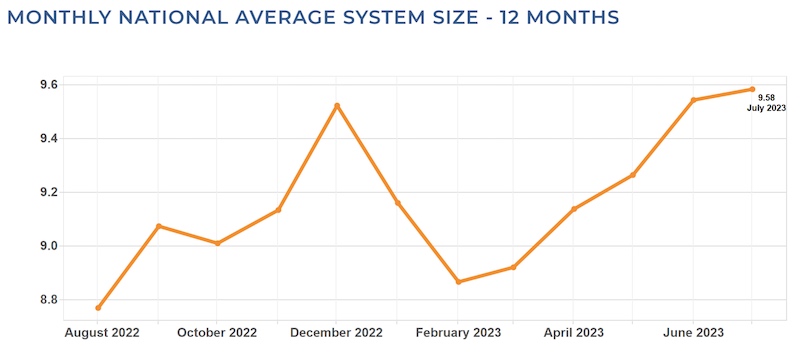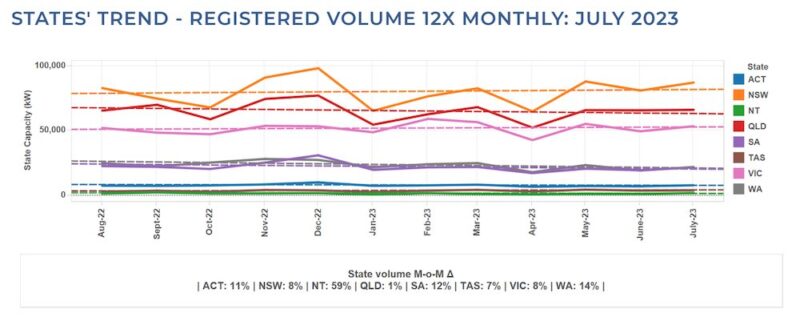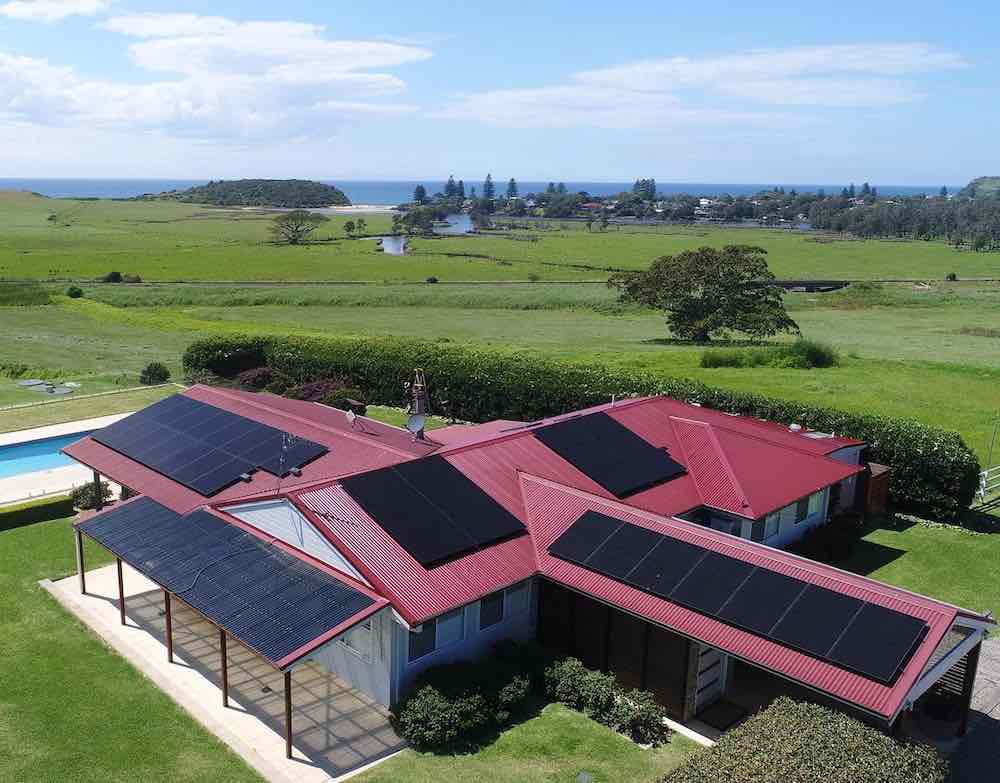
The call from industry experts to “cover the roof” in solar panels, as we move rapidly towards all-electric homes and cars, might be gaining some traction, with new monthly data showing the average home system size hitting an “all-time high” just shy of 10kW.
Australian solar industry gurus SunWiz report this week that growth in the 10-15kW market segment over the month of July has been practically the same as the 6-8kW market.
SunWiz managing director Warwick Johnston says that while the 10-15kW bracket is wider than the 6-8kW bracket – “so we’re not completely comparing apples with apples” – the trend suggesting systems are getting bigger is interesting.
As we have reported on One Step Off The Grid, it was not that long ago that the advice many rooftop solar installers were giving their residential customers was to install just enough panels to meet the household’s average electricity demand – unless there were plans for a battery, too.
For some time, this meant the average residential solar system size across Australia was sitting at 6.6kW, and somewhere around that number tended to be where all first quotes for new rooftop systems would fall.
But as power prices started to soar and households began to consider the many benefits of going electric – from the in-house appliances to the wheels in the driveway – the new average has shifted to 8kW.
“We need to encourage covering the roof with solar,” Solar Analytics co-founder Stefan Jarnason told the Clean Energy Summit last lear.
“We have interviewed our customers, and about 90% of them when we ask what would they do differently say install a bigger solar system.
“They’re about to switch away from gas to electric and … they’re soon going to add in electric vehicles, so their energy use will double, which means they need a still bigger system.”
So is this playing out? It’s too early to say, but as the chart below shows, the trend certainly seems to be heading in that direction, even as the overall rooftop solar market hits a bit of a plateau.

According to Johnston, the average system size for July 2023 increased to 9.58kW – an all-time high that even eclipses the commercial rush seen in December 2022.
Indeed, over the month all popular residential segments – 6-8kW, 8-10kW and 10-15kW) all observed an uptick in volumes as did most commercial (15-100kW) segments, with only the smallest segments (sub-6kW) seeing decreased volume.
For the broader market, a total of 264MW of new rooftop PV capacity was installed by homes and businesses in July, marking a 7% jump in volumes compared to the previous month.

That said, the national trend is down, dragged that way by flagging residential installs, which also continue to trend down over the past 12 months – perhaps due to tough economic conditions.
Commercial installs (15-100kW) are trending up, however, putting overall volumes for the month slightly ahead of July 2022 – and on par with 2021, but below 2020. The market year-to-date figures are 20% ahead of the volumes seen at the same time last year.
On a state-by-state basis, SunWiz says growth was led by New South Wales and Victoria, which managed to climb above their straight-line averages in July.

South Australia, to a lesser degree, also had an impact on improving total market volumes, while other states and territories held steady, Johnston says.

Sophie is editor of One Step Off The Grid and editor of its sister site, Renew Economy. Sophie has been writing about clean energy for more than a decade.

